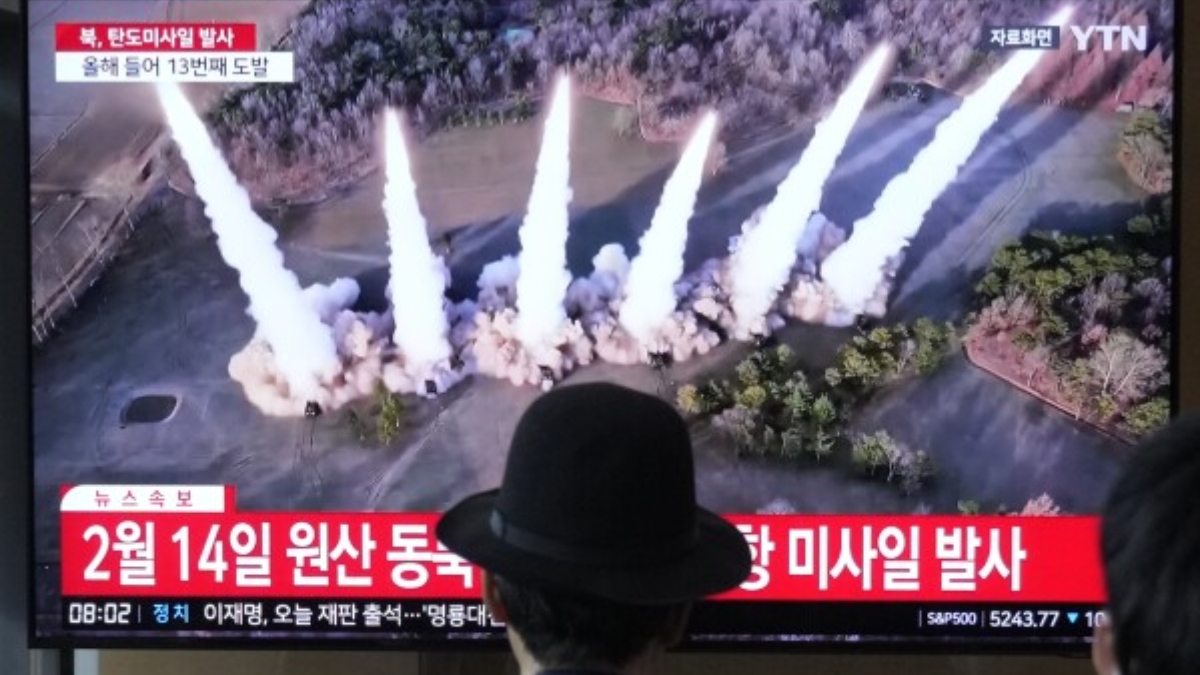South Korea on Tuesday said that neighbouring North Korea had test-fired an intermediate-range ballistic missile (IRBM). According to the South Korean Joint Chiefs of Staff, the missile was launched from an area near the North Korean capital of Pyongyang.
It flew roughly 600 kilometres and landed in the sea between the Korean Peninsula and Japan.
Here’s a look at what ballistic missiles are and how much of a threat they pose.
What are ballistic missiles?
Ballistic missiles are projectiles that are powered by rocket engine(s) until they reach the highest point in their trajectory. From then on, it follows an unpowered trajectory, arching upwards before falling (due to the earth’s gravity) to reach its target.
How dangerous are ballistic missiles?
These missiles are capable of carrying conventional warheads, such as TNT. They can also carry non-conventional warheads, including nuclear, biological, and chemical weapons.
They can deliver these payloads at high speed and over great distances. In fact, warheads delivered by these missiles can travel at speeds of 3,200 kilometres per hour right before impact.
Types of ballistic missiles
Ballistic missiles can be classified on the basis of the distances they can travel. According to this classification, there are four kinds of ballistic missiles:
Impact Shorts
More ShortsShort-range ballistic missiles (SRBMs): Also known as “tactical” ballistic missiles, SRBMs travel less than 1,000 kms.
Medium-range ballistic missiles (MRBMs): They travel between 1,000 and 3,000 kms. These are also sometimes referred to as “theatre” ballistic missiles.
Intermediate range ballistic missiles (IRBMs): These travel between 3,000 and 5,500 kms. South Korea says that the one test-fired by North Korea on Tuesday was an IRBM.
Intercontinental ballistic missiles (ICBMs): This long-range ballistic missile is capable of hitting targets that are over 5,500 kms away from the launch point.
North Korea’s IRBMs
According to the Center for Strategic and International Studies (CSIS), Pyongyang has two IRBMs:
Hwasong-12: Also known as KN-17, this missile is believed to have a range of 2,000-4,500 kms. It can carry a single warhead weighing upto 500 kilograms. It was first successfully tested in May 2017. North Korea has flight tested the Hwasong-12 at least seven times, achieving four successful flights and three failures. It is unclear if North Korea has operationally deployed the missile.
BM-25 Musudan: This IRBM is also known as Hwasong-10, Mirim, and Nodong B, BM-25. It is believed to have a range of 2,500 – 4,000 kms, and can carry a payload weighing 500 – 1,200 kgs. BM-25 Musudan could pose a risk to Japan as well as Guam, an unincorporated territory of the United States.
With inputs from agencies
)